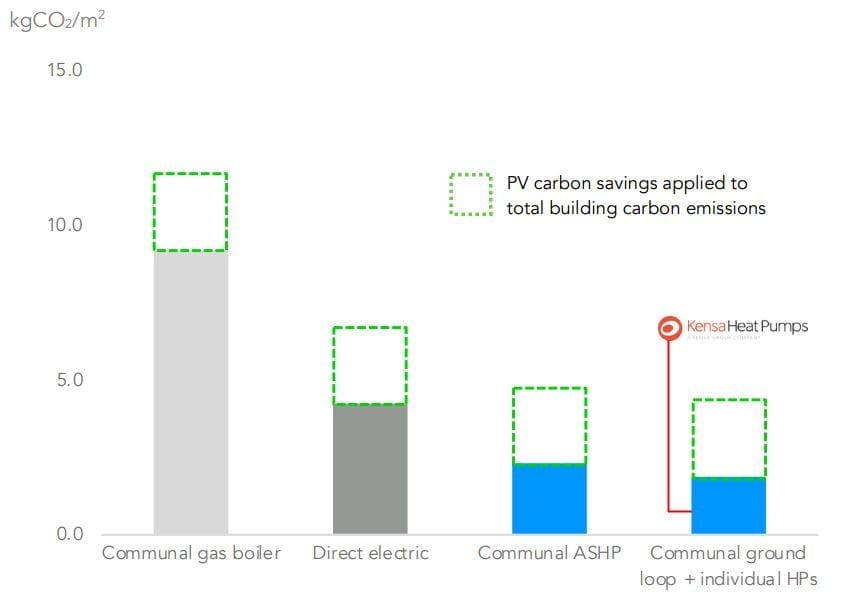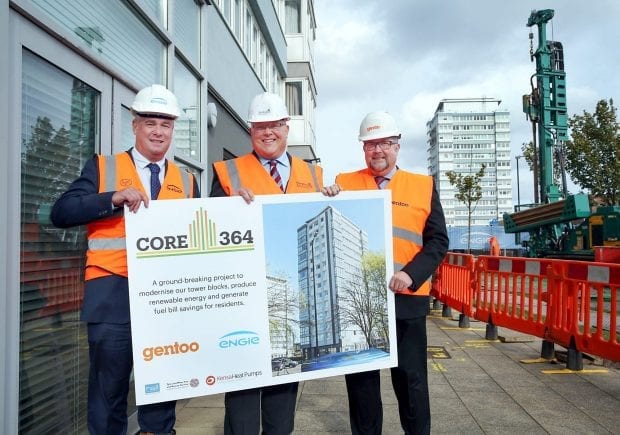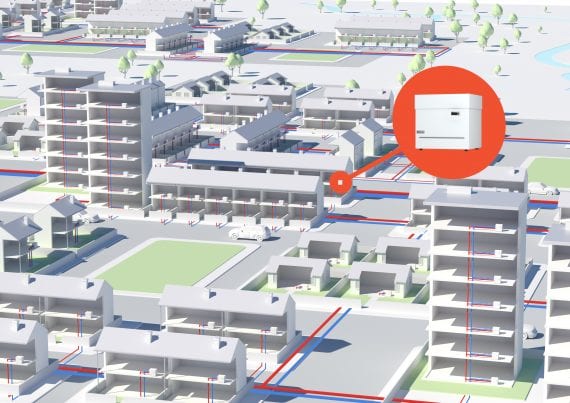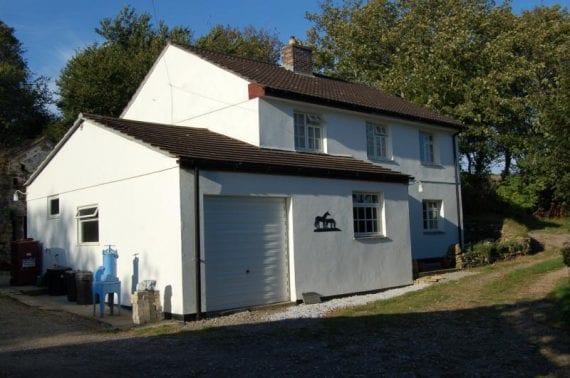Summary: 364 Kensa Shoebox ground source heat pumps are being installed by Kensa Contracting into seven tower blocks in Sunderland, as part of an ambitious programme by the Gentoo Group to improve the safety and comfort of their social housing residents living in high rise blocks.
Summary: Kensa Heat Pumps’ Shoebox heat pumps are further helping to green our capital and cut air pollution with a new pilot scheme between Kensa Contracting and Croydon Counci.
Ground source review: Brick Cottage.
Howard Smith, owner of Smith Builders Ltd, installed a 13kW Kensa Evo ground source heat pump into his dream self-build family home.
Summary: Kensa Contracting’s Managing Director, Dr Matthew Trewhella, explores three key innovations driving smarter energy grid’s to support the large scale electrification of heat to meet the UK’s net-zero carbon target.
Ground source review: Little Penstraze
John and Sally Berriman chose a 13kW Kensa Evo ground source heat pump to provide heating and hot water for their new build cottage and adjoining annexe building at Little Penstraze in Cornwall. As the heat pump was manufactured just four miles down the road, this renewable heating project has a very small carbon footprint!
Ground source review: Nancemellin House
James Everest of Kernish, a ground source heat pump installer based in Cornwall, fitted his first Kensa Evo as part of a farmhouse modernisation project. This off-gas property was limited to oil or LPG as heating options, and his customers, eager to be self-sufficient, opted instead for a ground source heat pump.
Summary: Kensa Contracting helps Coastline Housing’s new-build development on a fruit farm in Cornwall grow in harmony with its surroundings.
Summary: Bristol’s commitment to achieving its carbon neutral pledge by 2030 is being realised with the aid of a sustainable housing development, featuring innovative low-carbon heating from Kensa.
Summary: As a nationwide delivery partner of Kensa’s ground source heat pumps, Kensa Contracting has now expanded into Scotland with the appointment of Matthew Black, a Scottish community heating specialist in Glasgow.
Maximise onsite electricity use & reduce bought-in electricity
The introduction of the government’s Smart Export Guarantee (SEG) in early 2020, in place of the export feed-in tariff (FIT), may have triggered some hesitation for potential new purchasers of solar photovoltaic panels (PV) up to 5MW.
The SEG’s lack of a minimum price for exported electricity or contract length creates a marketplace for energy firms to compete to offer solar homes the ‘best price’ for unused electricity they export. However, with the SEG requiring only that payments are greater than zero pence at all times of export, and placing the onus on individual companies to set payments and contract terms, Kensa suggests a better financial and environmental solution could be used to maximise onsite electricity use with ground source heat pumps.
Kensa says:
The demise of the Feed In Tariff (FiT) and introduction of the Smart Export Guarantee (SEG) has caused a hiatus of solar PV applications, but this shouldn’t mean lights out on their opportunities. Rather than export surplus electricity, savvy landowners, farmers, and self builders can utilise electricity from on site solar PV, wind, or hydro, to power a ground source heat pump to further reduce energy bills and emissions; rural landowners can diversify to tap into new business opportunities using heat from ground source heat pumps, and developers can significantly cut their carbon compliance costs.
Don’t let your surplus electricity go to waste
Ground source heat pumps are electrically powered devices that harness the natural heat energy freely available from ground or water sources and upgrade this to provide heating and hot water. The technology delivers three times more energy than it uses, making it an extremely energy-efficient source of heating, with no combustion, point-of-use emissions nor pollution.
By pairing a ground source heat pump with onsite electric generating technologies such as solar PV, wind, or hydro, many happy Kensa customers are experiencing a holistic and rewarding renewably sourced heating and electricity supply. Indeed, with a typical solar installation costing around £6,000, less than half what it did when the FiT started, then the costs for a self-sufficient self-build start to balance out thanks to the energy savings accumulated from renewably powering the energy-efficient heat pump.
Ground source sows the seeds of new business opportunities
Ground source heat pumps offer rural landowners even more than a low cost, efficient heating solution and a guaranteed income from the government; when combined with existing renewable technologies they can be the catalyst that creates lucrative new business opportunities.
Ground source is easily integrated with battery storage and other electricity-generating renewable technologies. Kensa is urging owners of these systems to consider using a ground source heat pump to turn any surplus electricity into heat energy, instead of letting it go back to the grid.
This 100% sustainable and renewable heat can then also be used to create other income-generating activities, such as commercial drying processes, producing fertiliser from animal waste or rock salt for crisps, or for keeping greenhouses at an ambient temperature.
Case Study: East Shaftoe Farm

One arable farm in Northumberland replaced an old oil boiler with a cascaded ground source heat pump system to provide heating to a farmhouse and outbuildings at a much lower cost.
By integrating the ground source heat pump system with the wind turbine and solar panels already on site, 100% of the farm’s energy needs are now supplied by renewable technologies. The owners have also directed some of the heat energy into a hydroponics system, allowing them to effectively diversify their business. (Read the East Shaftoe Farm case study here)
PV and GSHP in zero carbon cities
Go a step further and the value of PV remains substantial in the drive towards ‘zero-carbon cities’, and therefore the associated increasing penalties developers face to ensure carbon compliance.
The impact on developers in London for example who choose to install solar PV alongside ground source heat pumps, instead of gas combi boilers, in addition to the minimum required fabric efficiencies, could equate to a saving in carbon offset funds of as much as £636,300 on a 300 unit development. (Based on a representative 70m2 new build in London with a 4,200kWh heat demand.) (Read Kensa’ blog on how developers can cut the cost of carbon compliance here).
Indeed, the Greater London Authority (GLA) report, ‘Low Carbon Heat: Heat Pumps In London’ states:
Energy efficiency reduces demand to the lowest level, heat pumps deliver low carbon heat and PVs play a significant role in offsetting on-site the residual carbon emissions.
Looking ahead to 2030, preliminary analysis indicates that very low levels of total on-site carbon emissions (i.e. approximately 2kgCO2/m2/yr) can be delivered if very high standards of energy efficiency are achieved, an efficient heat pump system is provided and roof-mounted PVs are maximised.
Read Kensa’s response to the GLA report here.

Estimated total CO2 emissions in 2030 (kgCO2/m2 NIA) – high standard of energy efficiency. Source: Etude, ‘Low Carbon Heat: Heat Pumps In London’, September 2018.
Kensa Heat Pumps have commenced construction of a new 1000m2 manufacturing and office facility on its current site at the former Mount Wellington Mine in Cornwall. Read more
Summary: Celebrating their 20th anniversary, Britain’s ground source heat pump specialists at the Kensa Group, comprised of Kensa Heat Pumps, Kensa Contracting, and Kensa Utilities, have announced a series of promotions. Read more

Summary: In this interview, Dr Matthew Trewhella, Managing Director at Kensa Contracting, shares his thoughts on the role of hybrid heat pumps (a gas boiler coupled with an air source heat pump) compared to ground source heat pumps in future heat frameworks.
Read more















